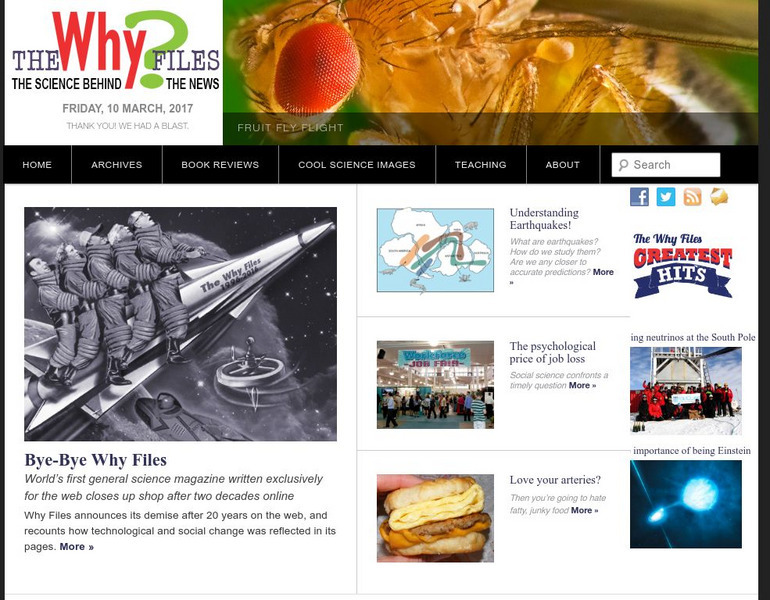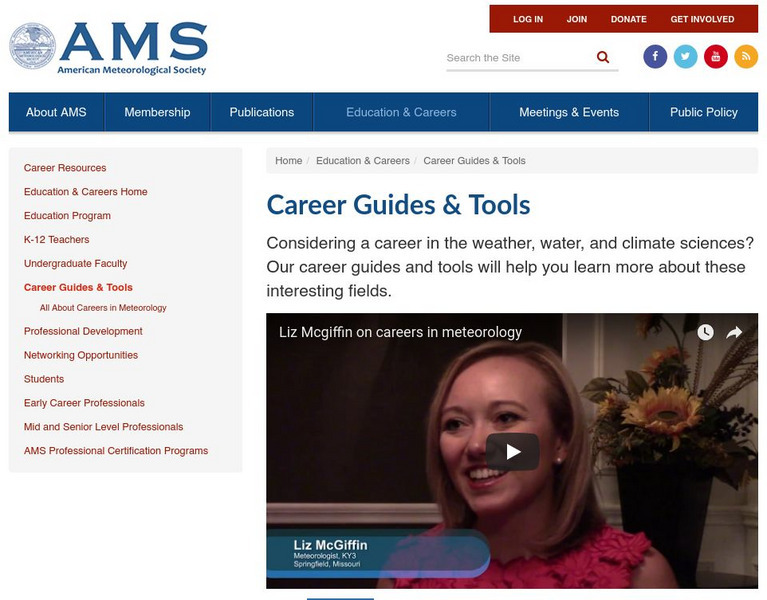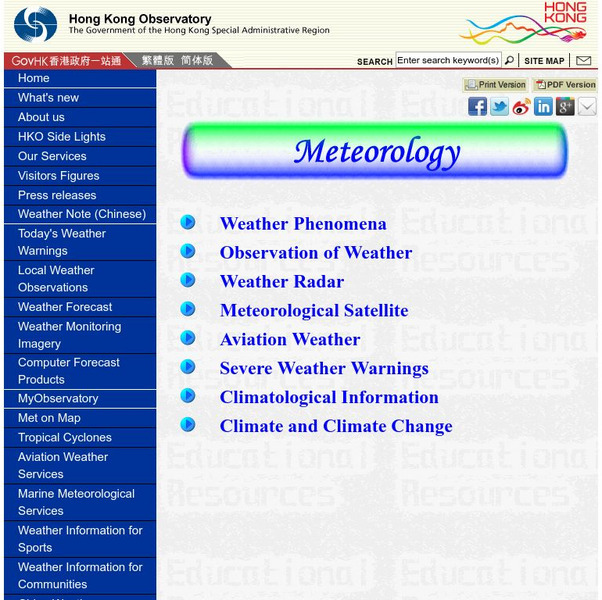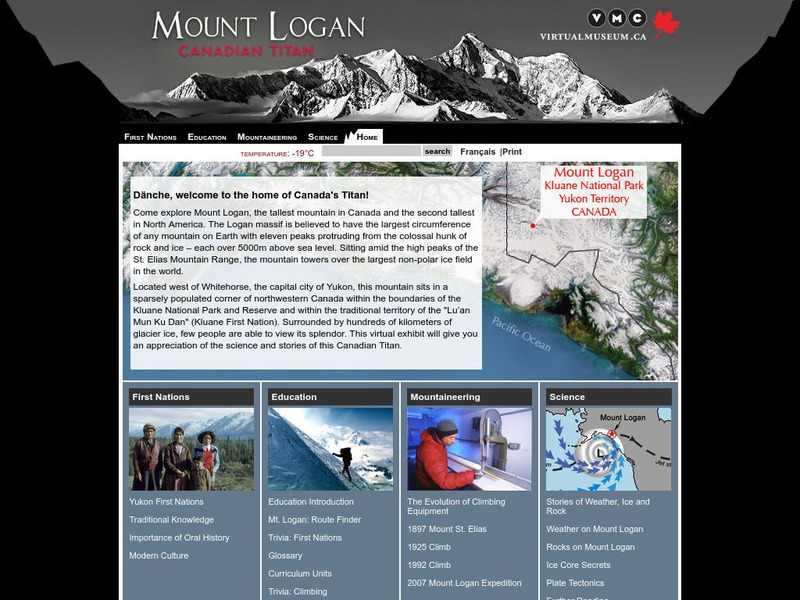American Museum of Natural History
Tornadoes Spinning Thunderstorms
Tornado winds can reach more than 200 miles per hour. Learners explore wind speeds and more characteristics of tornadoes with an online lesson. They learn how tornadoes form and how scientists attempt to predict them. Can be used as an...
University of Wisconsin
The Why Files: Science Behind the News
The Why? Files from the University of Wisconsin explains the science behind the news. The website, tackling issues in news headlines, provides a good mix of information and interactivity that takes the "chore" out of learning.
Other
Ams: Career Guides for the Atmospheric Sciences
Career guides for aspiring meteorologists from the American Meteorological Society.
Discovery Education
Discovery Education: Science Homework Help
The science section of this popular homework helper site features links to chemistry, life, earth, physical, and space science resources.
NOAA
Noaa: Atlantic Oceanographical and Meteorological Laboratory
The AOML researches oceanography, tropical meteorology, atmospheric and oceanic chemistry and acoustics in order to understand the physical characteristics of the ocean and atmosphere. Explore science in action!
Other
Fisher Science Education: Headline Discoveries Archive
What's new in the world of science? Find the latest articles about the newest discoveries and research in all the science disciplines: anatomy, astronomy, biology, biotechnology, chemistry, consumer science, environmental, forensics,...
Ducksters
Ducksters: Earth Science for Kids: Weather Forecasting and Meteorology
On this website, students can learn about weather forcasting and meteorology including cold and warm fronts, high and low pressure systems, fun facts, and technology.
Pennsylvania State University
Pennsylvania State University: Bad Science
This site from the Pennsylvania State University is maintained to provide teachers and students with examples of the bad science often taught in schools, universities, and offered in popular articles and textbooks.
The Franklin Institute
Franklin Institute: History of Science and Technology: Weather Instruments
A look back in time at weather instruments used in previous centuries. Includes pictures and descriptions of instruments from Franklin Institute's historical collection.
Other
American Meteorological Society: Advancement: Education Program
Are you interested in majoring in oceanic, hydrologic, or related sciences? This site offers resources for K-12, Undergraduate, and career.
Other
Hong Kong Observatory: Meteorology
A useful page from the Hong Kong Observatory offering introduction to weather and weather phenomenon. Learn about thunderstorms, tides, monsoon season, weather radar, and weather in space. Not a slick site but informative. Most...
Other
Dalhousie University: Department of Oceanography
Find out more about Grad studies, classes, seminars in the area of oceanography and also see some amazing pictures.
PBS
Pbs: El Nino
You can link to the anatomy of El Nino, chasing El Nino, and El Nino's reach. There is a resource page and a search page.
Library of Congress
Loc: Earth as Art: A Landsat Perspective
A really cool site showing Satellite (Landsat 7) images of unique geographical and meteorological phenomena. Images show cloud formations to rainforest devastation.
Other
Inpe: National Institute for Space Research
This site is the homepage of Brazil's National Institute for Space Research with links to specific programs in more defined categories like space and atmospheric sciences, meteorology, space engineering and technology, and more.
Other
National Pollutant Inventory: Background Information
This site focuses on water and air pollution in Australia, with a brief mention of sea breezes.
Virtual Museum of Canada
Virtual Museum of Canada: Mt. Logan: Canadian Titan
Mt. Logan in Canada's Yukon Territory is the tallest mountain in Canada and the second tallest in North America. Learn about the people who live around it, the history of mountaineering in the area, and the science - both geological and...















